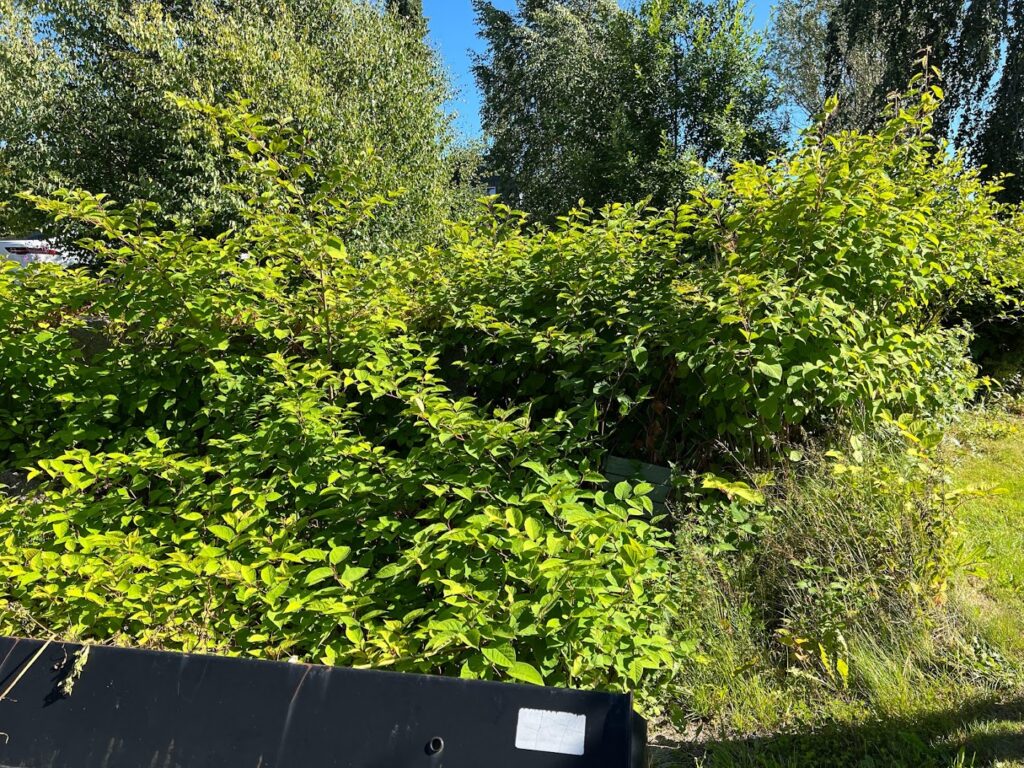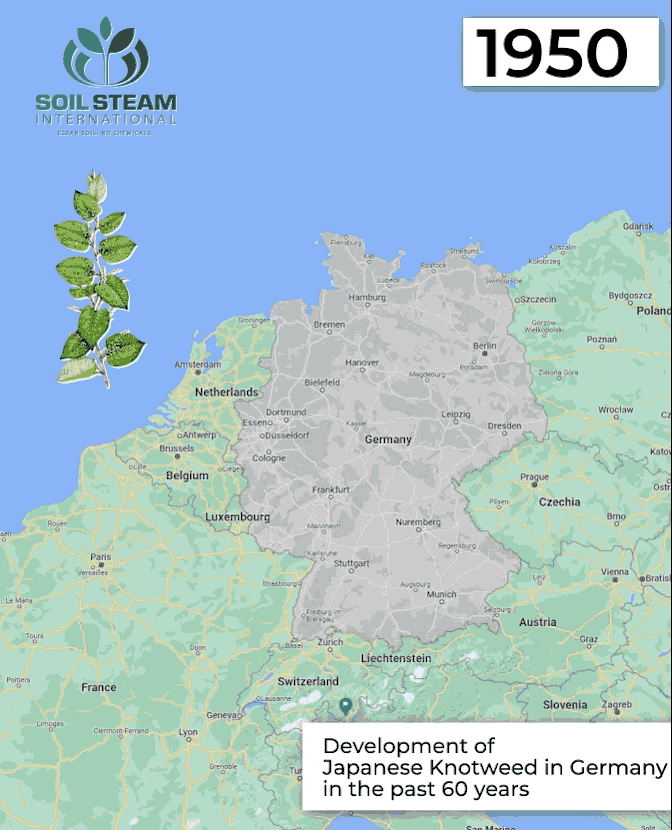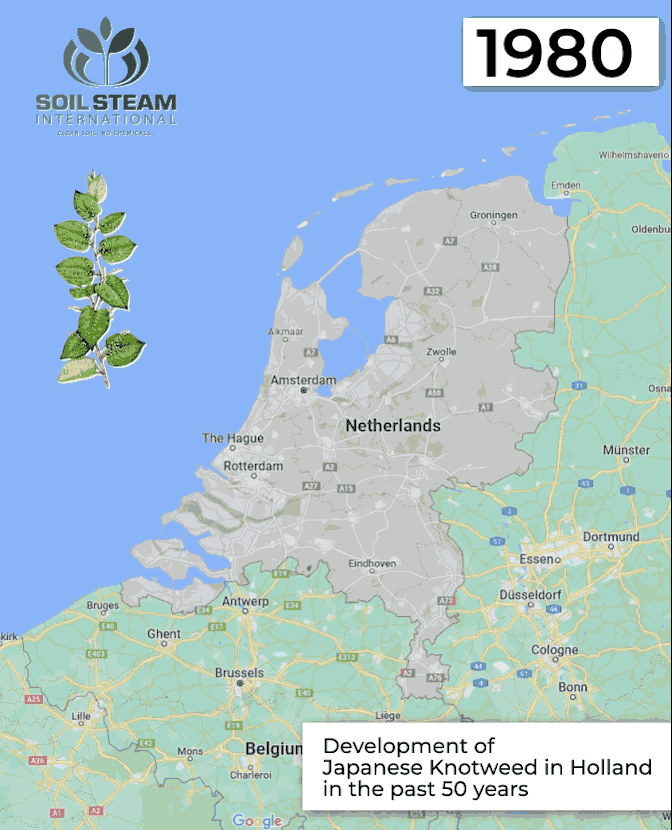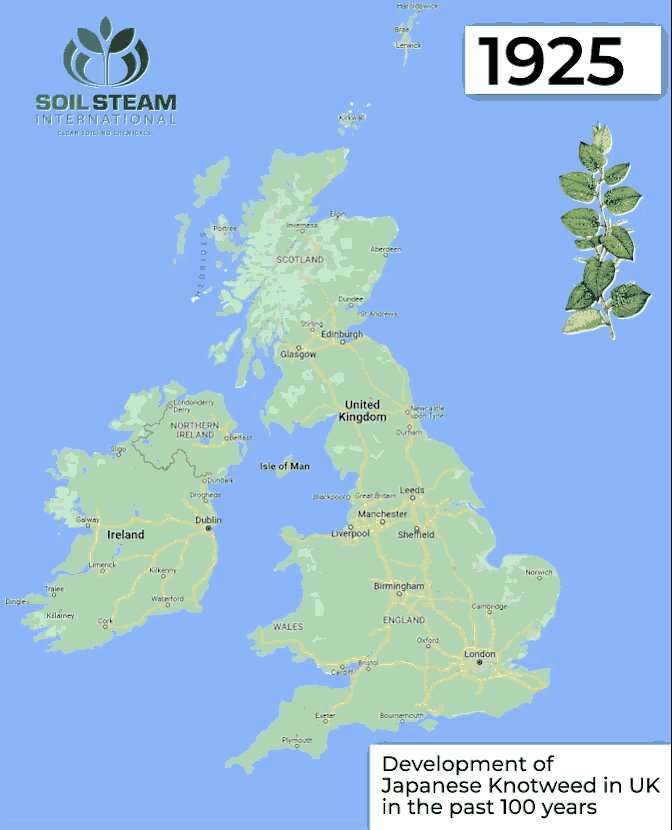Described by many as a “hated”, “repudiated” and “undesirable” plant, it seems far-fetched to think that one of the world’s most problematic invasive alien species, Japanese knotweed, was imported to Europe as an ornamental shrub in the 1800s.
“The threat the species poses today is greater than many of us realise,” says Hans Kristian Westrum, founder of SoilSteam. “Indeed, we have long heard warnings, including from the UN, about the consequences of some species spreading at a very rapid pace and exterminating local varieties.”
Japanese knotweed has few requirements for soil and establishes itself in various habitat types where there are threatened and vulnerable species. When the plants wither down, they leave a lot of organic matter, which settles on the ground, suffocating small and delicate species. As a result, the whole flora changes character and biodiversity is threatened.

“Fighting Japanese knotweed is difficult, time-consuming and costly”
Fighting Japanese Knotweed is difficult, time-consuming and costly, and achieving success with current methods is a challenge. In the UK and Ireland, for example (see illustration), the species has spread far and wide in recent decades, and countries such as the Netherlands, Germany, Sweden, and Norway are witnessing similar situations.



“That is despite targeted efforts and enormous costs to prevent the spread,” says SoilSteam founder Westrum. “In the UK, an estimated £41 million is spent every year on fighting Japanese knotweed, but it continues to spread to new areas. That example says a lot about how ‘hopeless’ this is and how we urgently need to rethink the way we combat alien species.”
Common methods for getting rid of Japanese knotweed
Two of the most commonly used methods for getting rid of this alien species are:
- digging up and degrading the soil, and
- chemical control in the form of spraying.
With the first method, it is not enough just to dig up the soil exactly where the plant stands. Japanese knotweed has several metres of roots, so the soil in a buffer zone around the planting field must also be dug away. That means removing up to 260 cubic metres of soil under and around each plant to ensure it doesn’t spread, which is the equivalent of more than 10 truckloads of soil! The soil is transported to a landfill, where it is considered waste and dumped or buried. So, with this process, crucial topsoil disappears from circulation. Topsoil which is taken out of circulation is a huge problem and the UN warns that the world could run out of topsoil already in 2050!
The second method of spraying pesticides presents further challenges, as most of us know it should be avoided for environmental reasons. It is also a very demanding method, as plants must be sprayed several times throughout the season and usually over several years for it to be effective.
Therefore, neither method provides satisfying outcomes.
The steam solution
Fortunately, there is a third solution, which is already here but unknown to many: steam.
To harness the power of this solution, SoilSteam has developed a technology where the soil is mixed with hot steam until the entire soil mass has reached the desired temperature and is sterilised so it can be recycled as topsoil. The machine that undertakes that process, called SoilSaver, can treat soil that has already been taken to a landfill, or biologically infected soil present on a construction project that can then be reused on site.
“We are also getting a lot of interest in sterilising other types of masses such as sludge, compost and coir,” says, Westrum. “We really are witnessing a major social commitment from both private and public organisations to ensure that all kinds of masses are recycled and not lost.”
Link: Read more about SoilSaver.
There are also multiple benefits, says Silje Eftang, Sustainability Manager at SoilSteam. “When soil masses are treated using water vapour, we not only prevent alien species from continuing to spread and reduce biodiversity. The method also means we can recycle our topsoil, which is a vital resource both for us and for future generations.”
“The SoilSteam method also takes care of our topsoil, which is a vital resource both for us and for future generations“
So can SoilSaver really fight all invasive alien plants, including their roots and seeds?
“Yes, so far the results have been very good,” says Eftang. “The company’s research team has worked in collaboration with the Norwegian Institute of Bioeconomy Research (NIBIO) to find the optimal combination of temperature and time needed for steam to kill harmful organisms and alien species.”
Japanese knotweed is among the easier invasive species to combat since it only spreads through vegetative growth in Norway. The most demanding species, such as lupins, which are classed as invasive species in several countries including Norway, need almost twice the temperature and time during treatment before they die.
“Steam treatment kills all the root parts and seeds of all the alien species that have been through the machine, including lupins,” says Eftang. “Although we are still in a learning phase here, we can safely say that we have tested all the worst species and our technology combats them all.”
So, what exactly are you waiting for?
| Info box: Three quick facts about Japanese knotweed: Name: Parkslirekne (Norwegian), Japanese knotweed (English), Fallopia japonica (Latin). Imported as an ornamental shrub from Asia to Europe in the 1800s. Currently listed as one of the world’s 100 worst invasive alien species, according to the International Union for Conservation of Nature. |